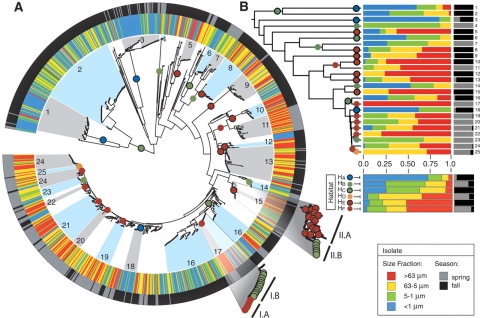A new analysis reveals how Staphylococcus aureus gains mutations that allow it to colonize eczema patches.


Research in Microbiology and Systems Ecology at MIT emphasizes quantitative methods for detecting and modeling both microbial physiology and community interactions. The interdisciplinary nature of research brings together labs in biology, physics, electrical engineering, civil and environmental engineering, and earth, atmospheric and planetary sciences.
A new analysis reveals how Staphylococcus aureus gains mutations that allow it to colonize eczema patches.

Gene-Wei Li investigates the rules that cells use to maintain the correct ratio of the proteins they need to survive.

A typical bacterial genome contains more than 4,000 genes, which encode all of the proteins that the cells need to survive. How do cells know just how much of each protein they need for their everyday functions?

The MIT associate professor wants to understand microbial communitites in their ecological context.
As he tells it, there’s been no grand design to Otto Cordero’s career path. Instead, the MIT associate professor says, there’s been “a lot of serendipity.”
Joy Yang
Martin Polz Lab
Title: Statistically Identifying Mechanisms of Phage-Host Interactions
Abstract:
Researchers develop a method to investigate how bacteria respond to starvation and to identify which proteins bind to the "magic spot" - ppGpp.
Mariana Matus Garcia
Alm Lab
Date: Monday June 4, 2018
Time: 10AM
Location: Building 68 room 121
Title: Analysis of fecal biomarkers to impact clinical care and public health
Abstract:
Network tracks the evolution of microbial communitites in sourdough starter mixtures shared around the world.
Researchers from MIT are taking their microbial research out of the lab and into the kitchen.